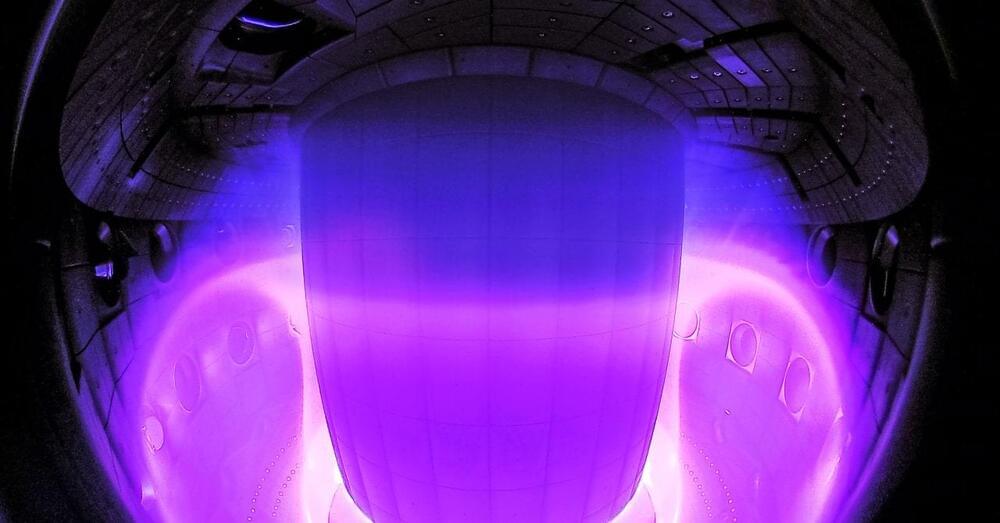Feb 24, 2022
A hole in the ground could be the future of fusion power
Posted by Shubham Ghosh Roy in categories: futurism, nuclear energy
MIT’s startup Commonwealth has a new powerful magnet that could finally make fusion power a reality.
MIT’s startup Commonwealth has a new powerful magnet that could finally make fusion power a reality.
Russian forces have seized control of the Chernobyl power plant in northern Ukraine, the site of the world’s worst nuclear disaster, according to the agency that manages the area.
Troops overran the plant on the first day of Russia’s multi-pronged invasion of Ukraine, a spokesperson for the State Agency of Ukraine on Exclusion Zone Management, Yevgeniya Kuznetsovа, told CNN.
“When I came to the office today in the morning (in Kyiv), it turned out that the (Chernobyl nuclear power plant) management had left. So there was no one to give instructions or defend,” she said.
Successfully achieving nuclear fusion holds the promise of delivering a limitless, sustainable source of clean energy, but we can only realize this incredible dream if we can master the complex physics taking place inside the reactor.
For decades, scientists have been taking incremental steps towards this goal, but many challenges remain. One of the core obstacles is successfully controlling the unstable and super-heated plasma in the reactor – but a new approach reveals how we can do this.
In a joint effort by EPFL’s Swiss Plasma Center (SPC) and artificial intelligence (AI) research company DeepMind, scientists used a deep reinforcement learning (RL) system to study the nuances of plasma behavior and control inside a fusion tokamak – a donut-shaped device that uses a series of magnetic coils placed around the reactor to control and manipulate the plasma inside it.

The Google-backed AI firm taught a reinforcement learning algorithm to control the fiery plasma inside a tokamak nuclear fusion reactor.
But thankfully it did NOT involve 6 malevolent AI robot arms, NOR was it done in the middle of New York City by an oddly literally named Doctor Octavious. ☝️😉
Google’s DeepMind can dynamically adjust the magnetic fields inside a tokamak.
Most energy-producing technologies used today are unsustainable, as they cause significant damage to our planet’s natural environment. In recent years, scientists worldwide have thus been trying to devise alternative energy solutions that take advantage of abundant and natural resources.
In addition to solar energy, wind energy and seawater energy solutions, some physicists and engineers have been exploring the possibility of sourcing energy from nuclear fusion reactions. This is the process through which two atomic nuclei combine to form a heavier nucleus and an energetic neutron.
Two research teams working at the Lawrence Livermore National Laboratory’s (LLNL) National Ignition Facility (NIF) demonstrated new approaches to increase nuclear energy production via a laser-driven fusion reaction. Their findings, published in recent Nature and Nature Physics papers, open new exciting possibilities for one day using self-heating plasmas as sustainable energy sources.
Laser-driven ion acceleration has been studied to develop a compact and efficient plasma-based accelerator, which is applicable to cancer therapy, nuclear fusion, and high energy physics. Osaka University researchers, in collaboration with researchers at National Institutes for Quantum Science and Technology (QST), Kobe University, and National Central University in Taiwan, have reported direct energetic ion acceleration by irradiating the world’s thinnest and strongest graphene target with the ultra-intense J-KAREN laser at Kansai Photon Science Institute, QST in Japan. Their findings are published in Nature’s Scientific Reports.
It is known that a thinner target is required for higher ion energy in laser ion acceleration theory. However, it has been difficult to directly accelerate ions with an extremely thin target regime since the noise components of an intense laser destroy the targets before the main peak of the laser pulse. It is necessary to use plasma mirrors, which remove the noise components, to realize efficient ion acceleration with an intense laser.
Thus, the researchers have developed large-area suspended graphene (LSG) as a target of laser ion acceleration. Graphene is known as the world’s thinnest and strongest 2D material, which is suitable for laser-driven ion sources.
For the first time, artificial intelligence has been used to control the super-hot plasma inside a fusion reactor, offering a new way to increase stability and efficiency.